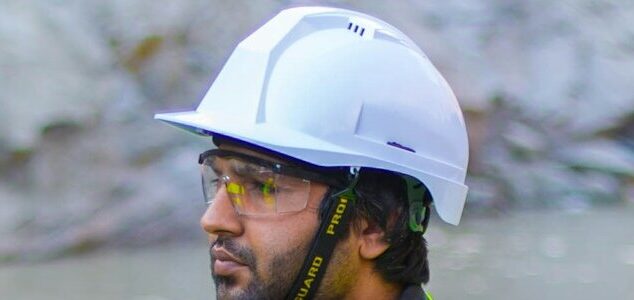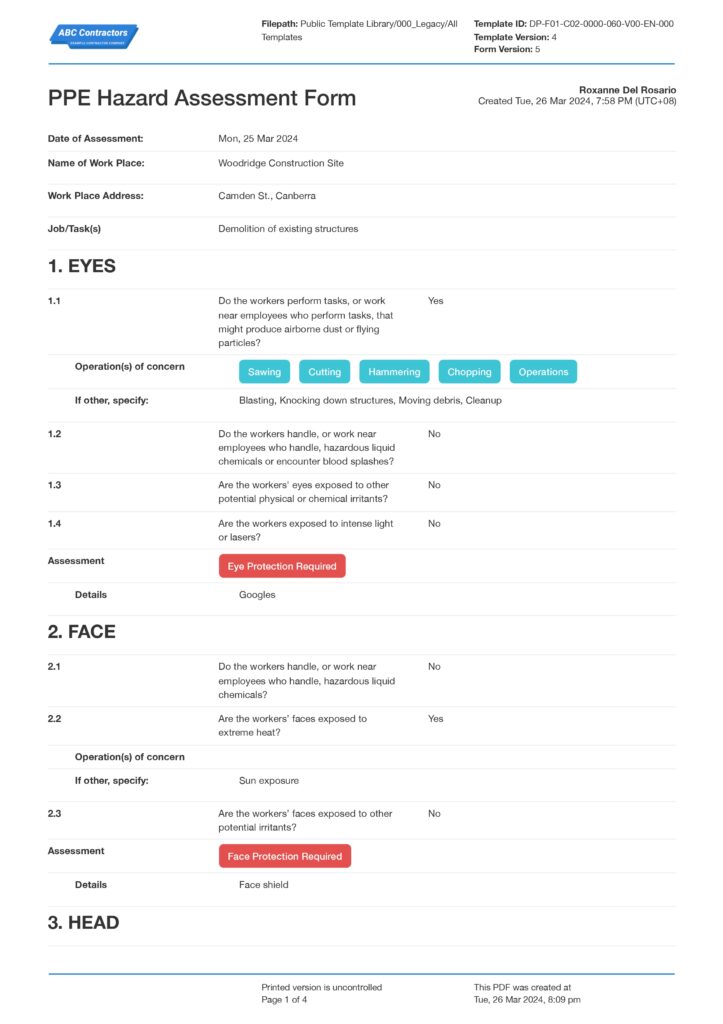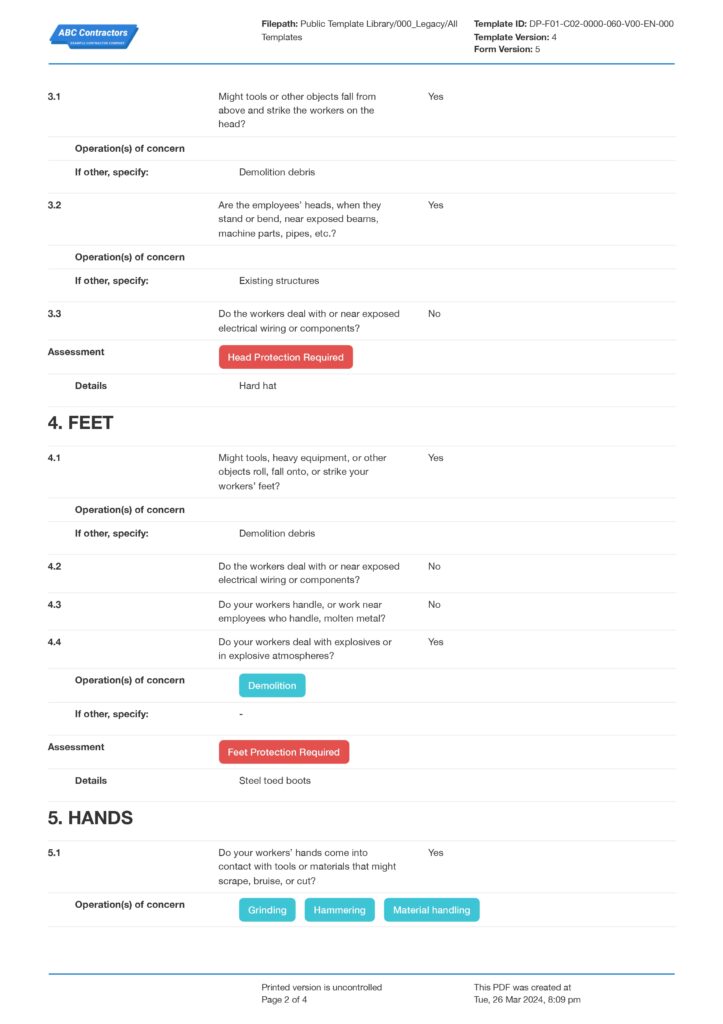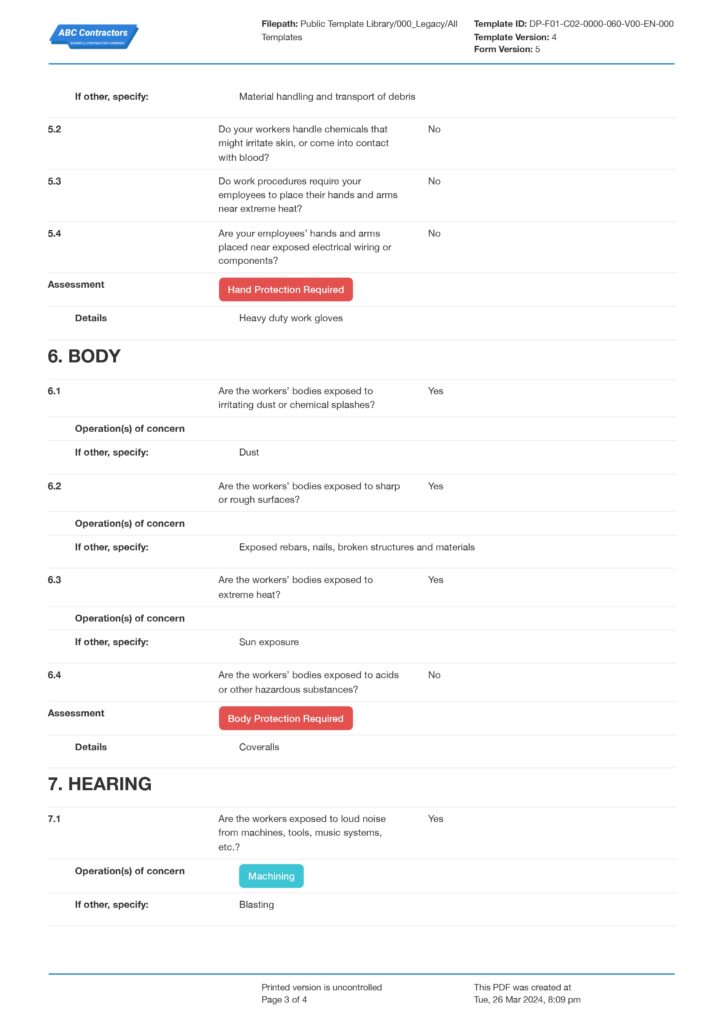Dashpivot Article – What is a PPE Hazard Assessment?
What is a PPE Hazard Assessment?
This article will tackle the intricate question of what is a PPE hazard assessment, as well as provide you with some free resources for performing these assessments in a better and more compliant way.

What is a PPE Hazard Assessment?
Personal Protective Equipment (PPE) is known across all industries, you are familiar with this as the gear that you wear to protect yourself while working or exposed in a hazardous situation or area and often times this is seen as a statement of your profession like engineers wear had hats and excavator drivers wear protective vests. But, did you know that what PPE to wear is also carefully assessed according to the hazard an individual is exposed to? i.e you don’t have to wear a hard hat if you are not exposed to falling objects. This is where we start to the answer the question of what is a PPE hazard assessment.
PPE Hazard Assessment is a form that documents the thorough identification of what protective equipment a person needs to wear in each process. PPE is at the last line of defence in the Hierarchy of Controls but it is very important because it ensures that when other controls are not possible and the hazard cannot be removed and improved in such a way that reduces the exposure, PPE is the last resort to prevent and minimise the injury.
How are PPE Hazard Assessments performed?
Well, systematically. The PPE hazard assessment is performed using a structured form and by doing a walk through while asking specific questions in the process, what activities are performed by the employee in the process? What hazards were assessed that will expose the employee to an injury in a specific parts of their body? In hazard and risk assessments, PPE is the last defence when the 5 hierarchy of controls are applied - elimination, substitution, engineering controls, administrative controls, then personal protective equipment. However in deciding what PPE to use it should be align to the current controls found in the process.
Let’s take a look at a specific example in manufacturing production line that produces electronic parts. In the beginning of the whole process, the raw materials are received in a closed area or a chemical room in production. Determine what activities an operator has to do in this area, the layout of the chemical room, walk through the activities the operator handling the chemicals will do, and using the form check each section categorised by a specific body part of the worker to assess whether it is exposed to a hazard and if a PPE is necessary.
Selecting the appropriate PPE with the identified hazards is an integral part in PPE hazard assessment, it’s a guarantee that all the hazards in the job has been identified, ensures that the worker is protected and meets regulatory standards.
What are the different PPE commonly required to wear in a hazard exposure?
What is a PPE Hazard Assessment for Eye and Face Protection?
Safety Goggles, face shields, laser eye protection and welding helmets are the most common eye protection equipment. When a worker is exposed to chemical and biological hazard like vapour or splash of liquid, it is required that they wear a tight-fitting eye protection that will completely cover their eye area. Welding helmet are used to cover the eye to rays and sparks during welding. It is also regulated that when using eye protection, it must be comfortable enough that when workers are using prescription lenses it should fit and cover it perfectly. It should have an ideal weight that will not force the user to remove it when it gets too heavy and uncomfortable. If the worker is not properly wearing the eye protection because the gear itself does not fit the general requirement, it exposes them to losing a clear view of the work that they are doing.
Head Protection
Whether you’re visiting or working on site, don’t ignore the safety sign that says “THIS IS A HARD HAT AREA” as injury in the head accounts for the top incidents and serious claims in the workplace. Head protection is very necessary when working or in areas that might cause a potential head injury like falling debris or impact. The most common PPE to use in the head is a hard hat that is designed to absorb shock and resist impact caused by falling object or to protect the head in case of slips, trips and falls. Depending on your industry, there is a safety requirement to follow when choosing the type of hard hat. There are also head protection like caps and hairnets that are used to protect the hair against entanglement when working on machines in motion.
Respiratory Protective Equipment
We become familiar about surgical face masks during the Covid-19 pandemic, it is also a type of PPE that protects the person from droplets and sprays of bodily fluids and medical workers are still using this in their workplace but there are also different respiratory protection that covers different levels of protection in various industries and these are all used to protect the individual from inhaling hazardous substances by covering usually the nose and the mouth and at times the full face. There are air purifying respirators that uses filters to remove gases, or contaminants from the air. An example of this are the Filtering Face piece Respirators (FFR) that are used to filter specific percentage of airborne particles and they classified according to a filter e.g N95,N99, R95, HE (High Efficiency Particulate Air), etc. and the Elastomeric Half Respirator (EHMR)or Full Face. There are also Atmosphere-Supplying Respirators that is used to provide clean breathing air from a different source. Just like the eye piece protection, it is required the respiratory protective equipments are tight-fit to avoid exposure.
Foot Protection
They say, “Tough guys wear boots” - this is not just an idiom for the tough, but protecting your foot from injuries in the workplace ensures you have the same tough feet before you went to work that day. Foot and leg injuries in the workplace are caused by exposure to unsafe situations that makes the person, trip, slip or fall and when a person steps into sharp objects, electrical hazards and electrostatic build up. Steel toe shoes, and slip resistant shoes are the most common foot protection wear found in the workplace.
Methods to hold an effective PPE Hazard Assessment
Walk through the process by simulation
Act out the process when walking through, this means you imagine not only the correct flow but the potential mistakes of the operator when doing the job. Often times when we design the process flow, it’s almost too strict that there’s zero tolerance for error forgetting that casualties in the job is not only caused by hazardous situations but also hazardous behaviour that caused the mistakes.
Answer the Question "What is a PPE Hazard Assessment" Through Standard Process
It’s important that the PPE Hazard Assessment should not be done while the workers are already exposed to the hazardous work. This should be conducted initially so that appropriate PPEs are already provided and the workers are already trained to use the PPE and reviewed and updated when the job steps are changes or the current PPE is ineffective.
Once you have designed your ideal process flow, you can build and utilise a PPE hazard assessment template to make sure everyone is following the process in the same way.

Use and customise PPE hazard assessment forms for free.
Train the workers to understand the purpose of PPE
Training is part of every safety assessment, and it cannot be helped that for the PPEs to be effective, it’s not always comfortable to wear. Since we are protecting the workers and they are the individuals that wear the PPE, they should be able to understand the purpose of these wearables to protect themselves and understand the hazards they are exposed to if they remove these equipment while working.
Make use of a digital PPE hazard assessment tool
Tools such as this PPE Hazard Assessment form made using the Dashpivot app is a structured and detailed digital document that helps you walk through your process and ask the right questions. This form is sectioned according to each body part, to ask which tasks are performed involving the exposure to hazard of this part. This standardise PPE hazard assessment form assess and streamlines the potential hazards to easily determine PPE requirements on site.
In this form you can attach photos and documents to provide further evidence of identified hazards directly to the PPE hazard assessment form and sign off document using a digital ID card.
Let’s sum it up
So what have we tackled in this article? We defined the purpose of hazard assessment forms, covered how to properly perform it, itemised the most common PPEs used according to the hazards found in the workplace, and look at different methods how to hold an effective PPE hazard assessment by walking through the process, when to conduct the the assessment, training the workers and introduced Dashpivot to help you automate and streamline this.

PPE Request Form template
Automate PPE requests and approvals with this smart PPE request form to save everyone time and ensure no PPE request ever gets missed or forgotten.

PPE Inspection Checklist template
Make your PPE inspection checklists easy to complete directly on site, and then download, print or share the results.

Field Level Risk Assessment template
Run this Field Level Risk Assessment template before specific tasks to keep things safe and compliant.




